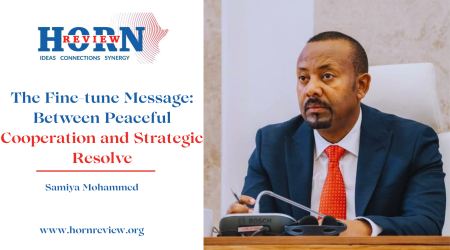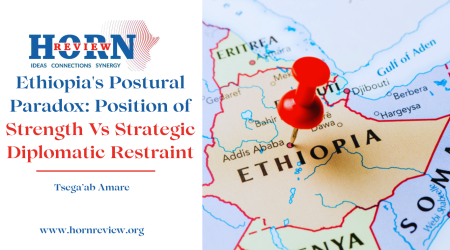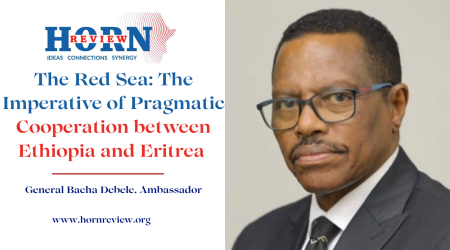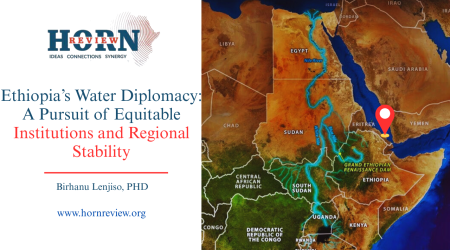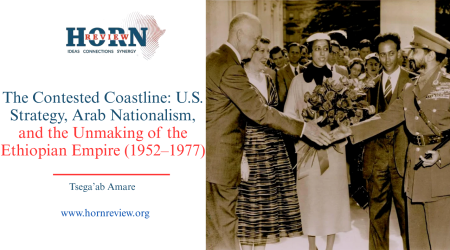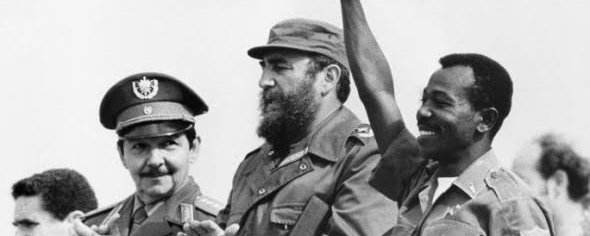
8
Jul
Ethiopian Foreign Policy Under the Derg Regime: Realist or Machiavellian?
A Theoretical Analysis of Ethiopia’s Foreign Policy Under the Derg Regime (1974 – 1991)
In the realm of international relations, Realism posits that states fundamentally prioritize power and security above all else. This school of thought sidelines ideology and moral considerations, concentrating instead on the stark realities of survival within a competitive and anarchic global order. Building upon this foundation, Machiavellianism endorses the strategic use of deception, opportunism, and even ruthless measures to safeguard national interests. It elevates raison d’État – the raison d’état or reason of state – as the paramount justification underpinning a leader’s decisions. While Realist doctrines have long undergirded Ethiopian diplomacy, it was during the Derg regime (1974–1991) that Machiavellian tactics became deeply ingrained in its foreign policy calculus. Confronted by a cascade of internal rebellions and external threats, the Derg’s approach coalesced around power consolidation, strategic flexibility, and pre-emptive control.
Realpolitik Before the Derg: Foundational Dynamics
Ethiopia’s tradition of Realist foreign policy emerged in the nineteenth century amid the challenges posed by European imperialism and regional contestation. Emperor Tewodros II presided over a fragmented polity besieged by Ottoman-Egyptian incursions and European encroachments. His foreign engagements were motivated not by sentiment but by calculated strategy. For instance, his overture toward Britain was driven less by shared religious affinity and more by the imperative to counterbalance more immediate existential threats. His political survival demanded deft navigation of a complex and shifting geopolitical terrain.
Under Emperor Haile Selassie, Ethiopia’s Realist posture matured substantially. The 1935 appeal to the League of Nations during Italy’s invasion laid bare the limitations of moral diplomacy and collective security mechanisms. The catastrophic failure of international institutions to intervene underscored a harsh reality: Ethiopia could rely on little beyond its own agency. Post-World War II, Haile Selassie expanded Ethiopia’s diplomatic outreach, positioning the country as a significant actor within the Non-Aligned Movement and as a founding member of the Organisation of African Unity (OAU). These accomplishments rested upon a delicate balance between diplomatic engagement and strategic prudence. Ethiopia cultivated ties with both the United States and the Soviet Union, vigilantly safeguarding core interests such as Eritrea’s status.
The imperial government adeptly fused Realist principles with institutional diplomacy, recognizing that the preservation of national sovereignty necessitated flexible alliances and acute sensitivity to the interplay of great powers. As Amare Tekle astutely observed, Ethiopia’s success lay in its ability to exploit the contradictions and competitive dynamics among external actors.
The Derg’s Foreign Policy: Security Through Adaptive Realism
Upon seizing power in 1974, the Derg inherited a region fraught with volatility and a fragmented domestic landscape. Despite its Marxist-Leninist ideological façade, the regime’s foreign policy was dictated more by exigency than doctrine. Encircled by hostile neighbors and beset by insurgencies, the Derg adopted a hardened Realist framework marked by strategic pragmatism.
Initially maintaining the non-alignment posture of its imperial predecessor, the regime swiftly pivoted when circumstances demanded. Its overarching priorities – consolidation of internal control, repulsion of external incursions, and suppression of insurgencies – remained constant, but its methods diverged sharply. The Derg operated with heightened secrecy, aggression, and tactical flexibility, characteristics that came to define its diplomatic and military conduct, particularly during the Ogaden War.
The Ogaden War: A Crucible of Machiavellian Statecraft
In 1977, Somalia launched an invasion into Ethiopia’s Ogaden region, underestimating the resolve and capacity of the Ethiopian state. President Siad Barre’s assumption of Ethiopian disarray proved premature. While Somali forces initially advanced, Ethiopia executed a swift and decisive reconfiguration of its foreign alliances. Frustrated by the United States’ reluctance to provide military aid, the Derg pragmatically turned toward the Soviet Union.
In a striking reversal, the USSR, previously aligned with Somalia, shifted its patronage to Addis Ababa. The Soviet Union delivered massive military support and dispatched thousands of Cuban troops. This abrupt volte-face confounded international observers. As Gebru Tareke documented, the Soviet Union’s rapid and efficient intervention was instrumental in repelling the very forces it had once trained.
The Derg’s victory secured Ethiopia’s territorial integrity and reinforced a critical lesson: the procurement of powerful allies outweighed ideological fidelity. The conflict underscored the imperative of pre-emptive containment of regional adversaries. Subsequently, the Derg adopted an uncompromising posture toward Somalia, supporting Somali dissidents and working assiduously to prevent any resurgence of Mogadishu’s power.
Proxy Conflict with Sudan: The Calculus of Covert Engagement
The Derg’s Machiavellian maneuvering extended beyond Somalia. Relations with Sudan, once relatively stable, deteriorated into mutual interference and proxy warfare. Sudan backed various insurgent groups, including Eritrean separatists, prompting Ethiopia to reciprocate by supporting southern Sudanese insurgents, notably the Sudan People’s Liberation Army (SPLA). This tit-for-tat dynamic defined bilateral relations for years.
As chronicled by Regassa Bayissa, Ethiopia’s assistance to the SPLA transcended mere retaliation; it was a calculated strategy aimed at destabilizing Sudan and undermining Khartoum’s capacity to support Ethiopian insurgencies. The strategic objective was clear: by embroiling Sudan in internal conflict, Ethiopia diminished the threat of coordinated opposition along its western frontier.
This pattern exemplified a broader strategic logic the – Derg regarded neighboring states less as partners and more as latent threats. Cooperation was subordinated to pre-emptive disruption, with covert support for insurgent groups serving as a principal instrument of foreign policy.
A Doctrine of Control: Immediate Security at the Expense of Long-Term Stability
Throughout its tenure, the Derg prioritized regime survival and national control above all else. The frequent realignment of alliances, proxy conflicts, and military buildups were not aberrations but deliberate components of a security-first doctrine. Unlike the imperial government, which tempered Realism with diplomatic pragmatism, the Derg favored confrontation, secrecy, and coercion. While these tactics proved effective in staving off immediate threats, they also sowed seeds of enduring regional instability.
The Ogaden War victory exacted a diplomatic toll. Ethiopia’s alignment with the Soviet bloc alienated it from the Non-Aligned Movement and engendered suspicion among African peers. Simultaneously, its backing of insurgent groups in Sudan and Somalia deepened mistrust across the Horn of Africa. Though the Derg succeeded in preserving the Ethiopian state in the short term, it failed to resolve deeper, protracted crises in Eritrea and Tigray.
The Enduring Legacy of Machiavellian Realism
The Derg’s foreign policy bequeaths a complex and ambivalent legacy. It undoubtedly prevented state disintegration amid extraordinary turbulence, yet its reliance on coercion and manipulation entrenched patterns of hostility within the region. The doctrine of being “Surrounded by Enemies” became ingrained in Ethiopia’s strategic psyche, reinforcing isolationism and suspicion.
Where earlier Ethiopian leaders balanced Realism with diplomacy and multilateral engagement, the Derg prioritized militarization and zero-sum calculations. The outcome was a state that endured but emerged increasingly isolated, securitized, and wary of regional cooperation.
This legacy continues to shape contemporary regional attitudes. Some Ethiopians remain influenced by the Derg’s lens – cautious, defensive, and hyper-vigilant to threats – while others champion greater regional integration and dialogue. This debate encapsulates a fundamental tension: how much Realism is prudent, and at what point does it corrode the very stability it aims to secure?
The Derg’s experience offers a profound case study in the promises and perils of Machiavellian foreign policy, illustrating the value of strategic clarity but also warning against allowing fear and power politics to dominate a nation’s worldview.
By Mahider Nesibu,Researcher,Horn Review
References
- Krishnamurthy Venkataram (1973), Foreign Policy of Theodore II of Ethiopia: An Interpretation
- Amare Tekle (1989), “The Determinants of the Foreign Policy of Revolutionary Ethiopia,” Journal of Modern African Studies
- Joseph K. Nkaisserry (1997), The Ogaden War: Causes and Impact
- Gebru Tareke (2000), “The Ethiopia–Somalia War of 1977 Revisited,” International Journal of African Historical Studies
- Regassa Bayissa (2007), “The Derg–SPLM/A Cooperation: An Aspect of Ethio-Sudan Proxy Wars,” Ethiopian Journal of the Social Sciences and Humanities
- U.S. Office of the Historian, “Horn of Africa and SALT II, 1977–1979”


